Neuromuscular Therapy

WOW! I should have just gone right to Shawn when I woke up one morning and could not move my head, and the pain left me unable to work for two days. I went to the chiropractor AND got a massage, but none of it compared to the relief that I got from one short visit to Shawn. Most therapy takes a few days to feel better after the work, but the pain I had was gone from the moment I walked out the door. I encourage you to go see him!
– David Waller, Restaurant Entrepreneur

What is Neuromuscular therapy?
Neuromuscular Therapy (NMT) is a form of soft tissue manipulation that aims to treat underlying causes of pain involving the muscular and nervous systems. NMT focuses on pinpointing and relieving soft tissues containing Trigger Points (hypersensitive tissue), Ischemia (lack of blood flow), Nerve Entrapment (nerve pinched in muscle) and Impingement (nerve pinched by bone), and addressing Postural Distortion (e.g. unable to stand evenly weighted) and Biomechanical Dysfunction (unable to move efficiently). All of which can be caused by poor posture, repetitive motions and crushing injuries. These tissues and dysfunction can create strain patterns and be the source of Neuromuscular disorders and pain.
Trigger points are areas of hypersensitivity in a muscle caused by overstrain. These are small areas of the muscle in which there is a contracture of muscular tissue (think of a tiny snag in a knit sweater). Blood and nutrients are lacking in that part of the muscle (Ischemia) and therefore the muscle spindle is unable to relax. Trigger points cause pain, fatigue and weakness in the muscle. Trigger points also cause a phenomenon called referral pain. Referral pain is caused by trigger points and is a phenomenon in which areas from the trigger point suffer from sensations of pain, tingling, or numbness.
Shawn’s sessions will focus on evaluating the underlying causes of pain and use very precise techniques to alleviate the cause. Various orthopedic tests can be used to examine the biomechanical function and postural analysis to examine postural distortion to identify the dysfunctional areas to be address. By using a combination of NMT compression and/or friction techniques, areas of dysfunction can be resolved, pain eliminated and posture and functional movement restored.

